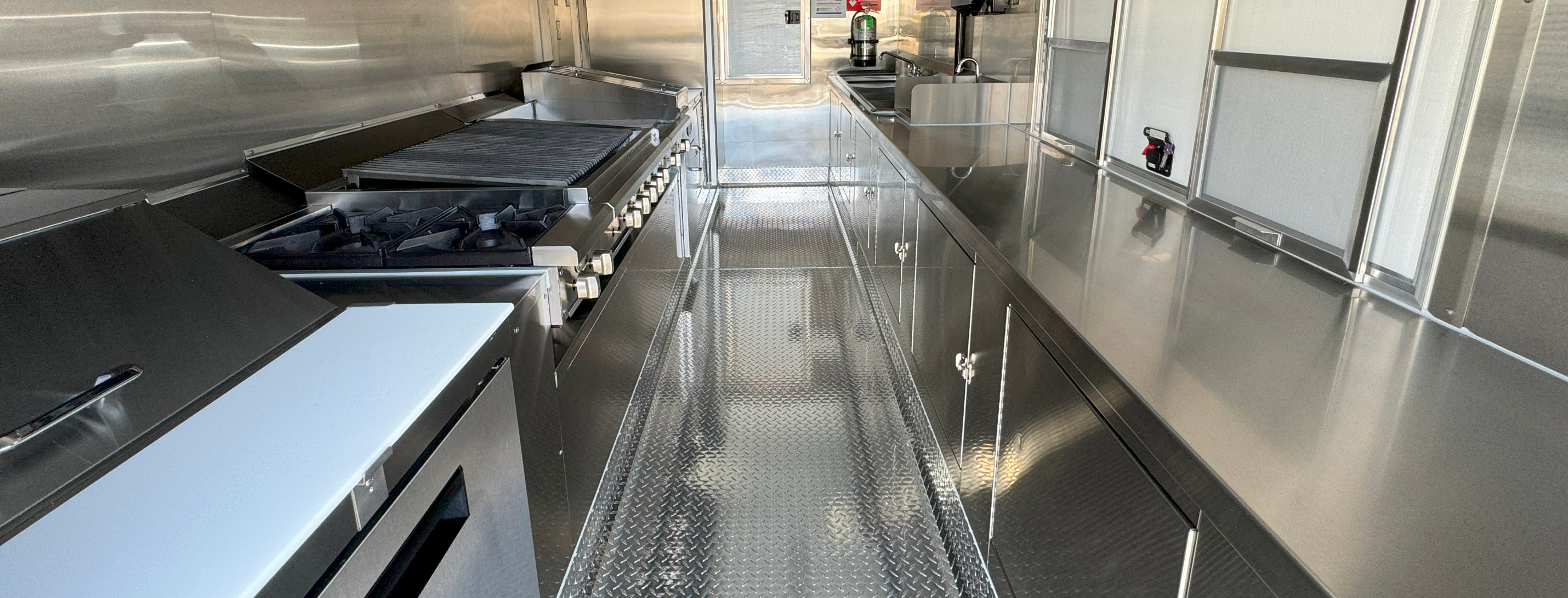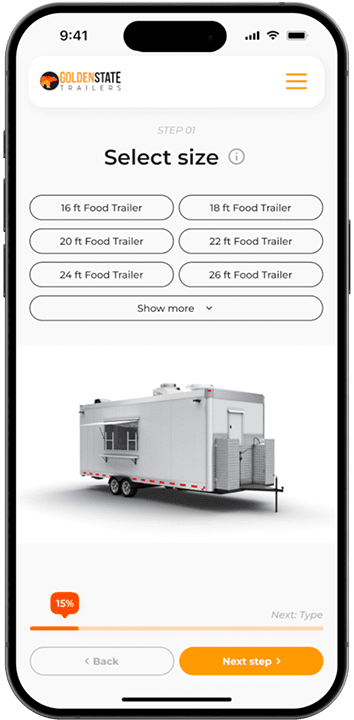Asian cuisine food trailers have become a popular venture for culinary entrepreneurs who wish to share their love for Asian flavors with the community. Offering a diverse range of dishes from sushi to ramen, these mobile eateries bring authentic food experiences directly to patrons. Designing the perfect Asian cuisine food trailer involves understanding the nuances of the cuisine, selecting the right equipment, and structuring the layout for efficiency and appeal.
Sushi and ramen are staples of Asian cuisine that require specialized features in a food trailer. For sushi, maintaining the freshness of fish and other ingredients is crucial. Proper refrigeration units and prep tables are essential. On the other hand, ramen requires efficient cooking stations to maintain the quality and consistency of the broth and noodles. Considerations for ventilation, water supply, and waste management are also vital to ensure safety and hygiene standards are met.
Learn more about the intricacies of setting up a specialized sushi trailer by exploring sushi food trailers.
Designing an Asian cuisine food trailer involves thoughtful layout planning to enhance workflow and accessibility to equipment. It’s important to consider customer flow, with serving windows positioned for easy access. Efficient use of space for food preparation, cooking, and service can help maximize productivity. Consider incorporating elements of Asian aesthetics in the design to make your trailer visually appealing and align with the culinary theme.
Ensuring that your Asian cuisine food trailer is equipped with the right tools is fundamental. Key equipment might include rice cookers, sushi refrigerators, steam tables, and noodle boilers. The type of dishes you’re planning to serve will largely dictate the equipment needs. Thoroughly research the appliances necessary for sushi or ramen to ensure quality and authenticity in your offerings.
Financing your food trailer can be a significant consideration for many entrepreneurs. Options might include traditional bank loans, leasing options, or seeking investors. It’s critical to plan your budget carefully, considering costs like equipment purchase, trailer customization, permits, and initial inventory. Investigating various financing options early in the planning process can help ensure you have the necessary capital to bring your dream trailer to fruition.
For more specific information on types of trailers, visit Asian cuisine food trailers.
Asian cuisine food trailers offer the advantage of mobility, allowing operators to reach diverse customer bases at different locations and events. They also provide low startup costs compared to brick-and-mortar restaurants and can easily adjust menus based on seasonal or local ingredient availability.
Equipping your trailer for sushi and ramen involves acquiring specialized equipment like commercial-grade refrigerators for raw fish in sushi preparation, rice cookers, and noodle boilers for ramen. Ensure that your trailer meets health and safety standards with proper water and waste handling systems.
Design considerations for Asian food trailers include efficient use of space for cooking and serving, incorporating authentic Asian aesthetics, and managing workflow from preparation to service. Customer access and attracting visual elements should also be considered in trailer design.
Yes, operating an Asian cuisine food trailer typically requires permits that vary based on your location. Commonly required are health permits, food safety certifications, and possibly event-specific licenses. It’s important to check local regulations and comply with all legal requirements before operating.
Securing financing for your Asian cuisine food trailer can be achieved through various avenues such as personal savings, bank loans, leasing options, or private investors. Entrepreneurs should explore all available financial products and services to determine the best fit for their situation.
 Team Building Success at Golden State Trailers: A Redfin Adventure
At Golden State Trailers, we believe in the power of community and adventure, which is why we’re excited to announce our recent feature in Redfin’s latest article! Sacramento, CA, a city rich in history and culture, offers the perfect backdrop for new adventures, team building, and success. Whether it’s exploring the picturesque Old Sacramento Waterfront […]
Team Building Success at Golden State Trailers: A Redfin Adventure
At Golden State Trailers, we believe in the power of community and adventure, which is why we’re excited to announce our recent feature in Redfin’s latest article! Sacramento, CA, a city rich in history and culture, offers the perfect backdrop for new adventures, team building, and success. Whether it’s exploring the picturesque Old Sacramento Waterfront […] Coffee Cart Guide – How To Start a Profitable Mobile Coffee Cart Business
Coffee carts have transformed from simple mobile stands into full professional micro coffee shops capable of serving high quality espresso, milk based drinks, cold beverages and specialty menu items. They offer one of the easiest and most affordable ways to enter the coffee industry, especially for entrepreneurs, baristas and small business owners who want to […]
Coffee Cart Guide – How To Start a Profitable Mobile Coffee Cart Business
Coffee carts have transformed from simple mobile stands into full professional micro coffee shops capable of serving high quality espresso, milk based drinks, cold beverages and specialty menu items. They offer one of the easiest and most affordable ways to enter the coffee industry, especially for entrepreneurs, baristas and small business owners who want to […]
